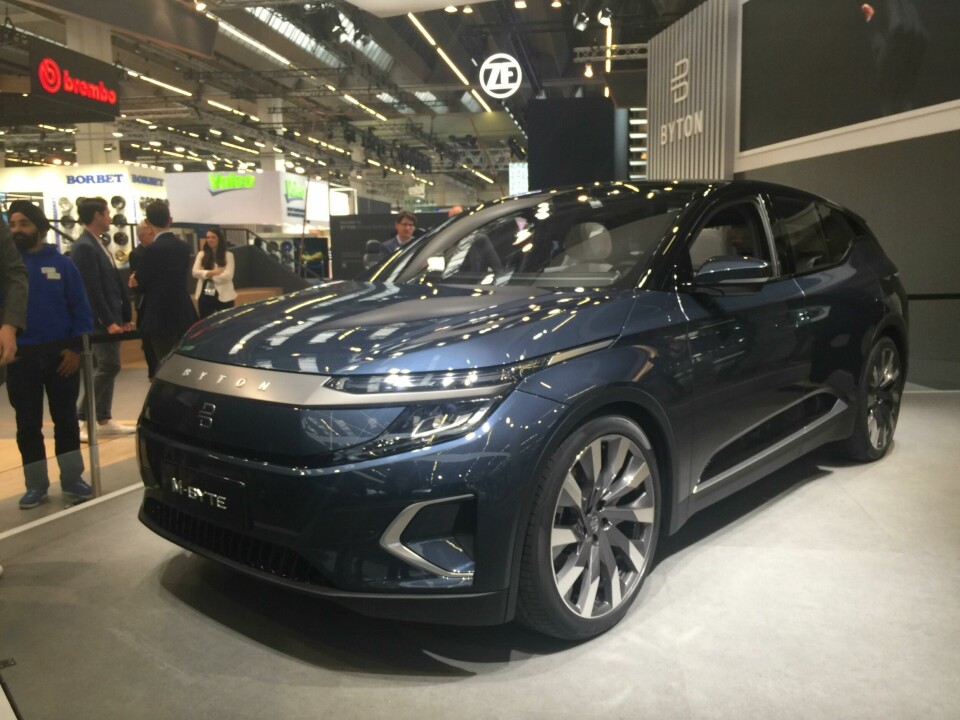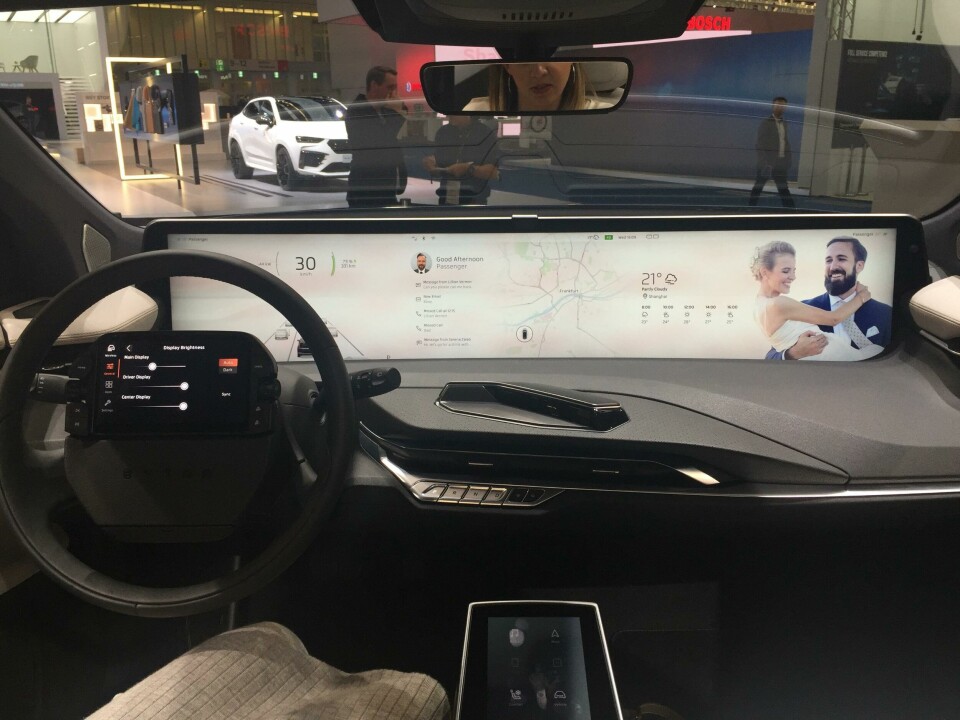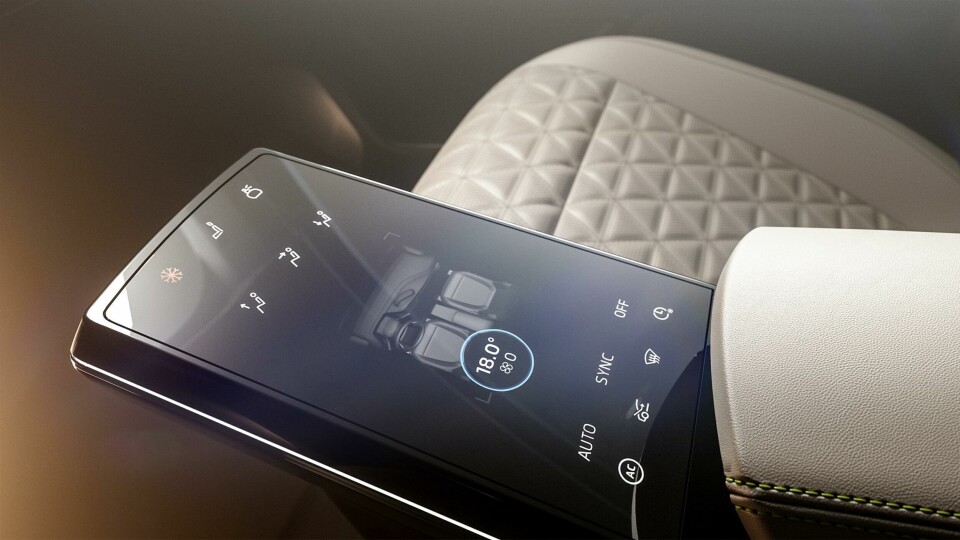
Frankfurt 2019: Byton inches closer to massive screen production
Byton debuted its production M-Byte at Frankfurt and we took a look inside
Genuine unique selling points among the proliferation of new electric car brands are becoming harder to discern but Byton’s M-Byte still has one – and it’s a big one: its dashboard-dominating 48-inch screen. Gaining its world debut at the Frankfurt motor show, the design team behind the Chinese marque’s mid-size SUV EV gave Car Design News a run-through of its production-ready features.

The M-Byte’s main full-width, dashboard-mounted infotainment screen is actually one of five (or six !) cabin screens in total and looks even more impressive in the flesh, as it is tall as well as wide. It isn’t a touchscreen but can be activated by a seven-inch tablet in the steering wheel hub, a floating eight-inch central touchpad between the driver and front passenger seats, or via a rear armrest screen option. (The other two infotainment screens for rear passengers are on the back of the front seats).

Most observers so far have admired the scale of Byton’s screen endeavour but questioned its distracting potential but Byton’s designers say they’ve done numerous tests that suggest otherwise. Set further away from the driver and passenger than would be the case with a touchscreen system, they argue that the driver doesn’t have to re-adjust his or her gaze as much from the IP screen to the windscreen view outward, thus reducing eye-ball fatigue.
Byton’s director of interior design, Sven Weinfurtner explained that the brand “wanted a design that would work worldwide” as making regional variants are expensive, but confirmed that even at the circa €40,000 starting price the 48-inch screen would be standard everywhere (higher trim levels will get more software content). The first market will be China – now from mid-2020 onwards rather than late 2019 as previously stated by Byton – with 2021 pencilled in for Europe. Right-hand drive markets like the UK are also promised and senior product manager Anna-Maria Schumacher said there were no technical screen-related reasons why that could not happen.
M-Byte’s day and night nav screens
The screen’s design features one consistent frame and single surface under which there are three sections, the driver-side one run on QNX software and the other two via Android Auto. Voice control operation can be by either Amazon’s Alexa or Baidu’s equivalent in China. ‘Gesture’ is also a potential control method plus fingertip swipe-hold-down-and-press techniques via the scrollable centre trackpad. The 4k quality screen is sharp enough to watch video without compromise from either of the centre or right-hand panels and the view of the car’s surroundings via outward-facing camera images relayed back into the cabin are also reassuringly clear. The raised bar section in front of the 48-inch screen monitors driver fatigue and the car’s gears are selected physically from R, N and D switches below that.
Beyond the screens the rest of the interior is a clean and relatively straightforward affair, as Byton’s director of colour and trim Williane “Lili” Oliveira told CDN: “As digital content is so strong, not much else needs to be added. Colour and trim needs to be simple but high quality with fewer colours so it doesn’t fight with the screens.” Quite.
Gallery of show pictures and a few release images of the interior










